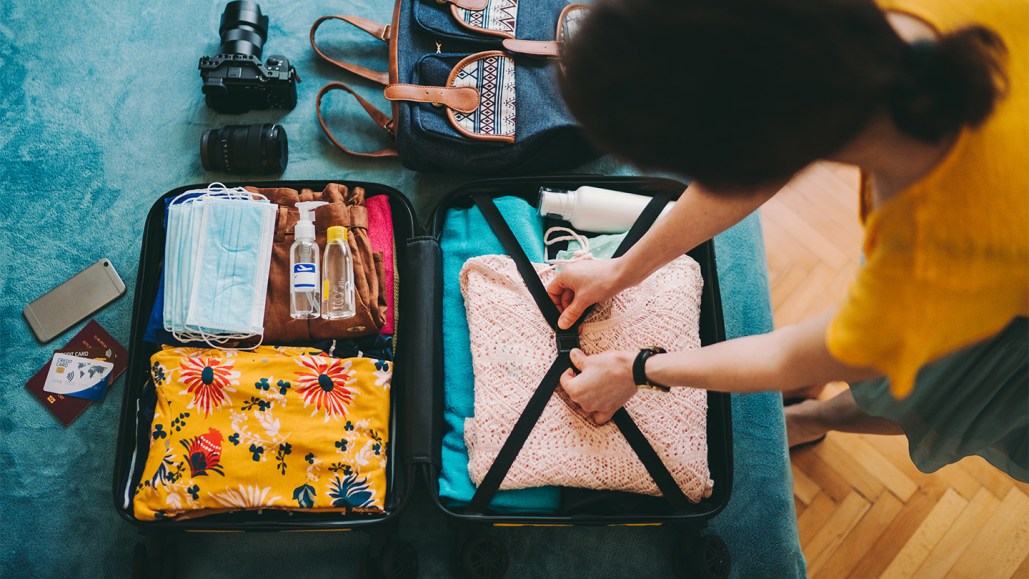Tips for Maintaining Health During the COVID-19 Summer Surge

A summer wave of COVID-19 is rising.
“There’s clearly a bump,” says William Schaffner, an infectious diseases expert at Vanderbilt University Medical Center in Nashville. The medical center has seen a steady increase of hospital admissions for COVID-19 over the past three weeks, Schaffner says. “That was entirely expected, I’m afraid.”
Each year, peaks of COVID-19 appear in the summer and again in the winter. Unlike influenza, which nearly disappears in the summer, SARS-CoV-2, the virus that causes COVID-19, hasn’t settled into a seasonal pattern (SN: 1/29/24). It spreads whenever and wherever people gather indoors.
“This is an endemic virus that really can’t be avoided if you’re going to be interacting with humans,” says Amesh Adalja, an infectious diseases physician and senior scholar at the Johns Hopkins Bloomberg School of Public Health.
COVID-19 has gotten less severe thanks to immunity from vaccines and prior infections and to treatments for the virus, Adalja says. Unlike previous summer waves, this one isn’t overwhelming hospitals.
Wastewater surveillance data — one of the only ways to gauge spread of the virus — indicate that viral variants are surging across the United States, especially in western states and in places that had mild winter seasons. And the variants circulating now are “incredibly infectious,” Schaffner says.
High or very high levels of SARS-CoV-2, the virus that causes COVID-19, have been found in wastewater in about half of U.S. states, especially in western states.
Levels of SARS-CoV-2 in wastewater as of July 11, 2024, by state
One variant on the rise is a great-great-great-grandchild of omicron called KP.3.1.1. Like other omicron offspring, it has multiple mutations in the spike protein, including one that helps it evade antibodies produced after an infection with recent variants or immunization with one of last fall’s version of the vaccines, researchers report July 17 in a preprint posted to bioRxiv.org.
The rising tide of infections is likely to last into August, Schaffner says, but there are things people can do to avoid getting sick.
Tend to your immunity by getting vaccinated against the coronavirus, Schaffner advises. That’s especially important for older people and people with medical conditions such as diabetes that put them at higher risk for severe disease. An estimated 6.6 percent of adults in the United States are immunocompromised, researchers reported in JAMA in February. Those people are especially vulnerable, Schaffner says.
Immunity from last year’s vaccination has probably waned. The U.S. Centers for Disease Control and Prevention say that high-risk people, especially people 65 and older, should consider getting vaccinated now and then get updated vaccines in the fall. Vaccines are good for preventing severe disease and hospitalization, but the current ones aren’t effective for blocking infection, Adalja says. Vaccination also can help prevent long COVID (SN: 7/17/24).
You can also wear an N-95 or KN-95 mask. “And you have to put them on correctly,” Schaffner says. “Wearing them below the nose or on your forehead … doesn’t help at all.”
People in high-risk groups, such as those who are immunocompromised, can get a monoclonal antibody called Pemgarda to help protect against infection, Adalja says.
If you’re sick now, take a test to see if it’s COVID-19, but don’t be too quick to dismiss the possibility if the result is negative. A negative test could mean the immune system is keeping the coronavirus in check or that you’ve come down with a different illness, Adalja says. A second at-home test or a PCR test at a doctor’s office may give a clearer answer.
Isolate yourself until you’re feeling better and don’t have a fever for at least 24 hours, the CDC advised in updated guidelines released in March. That goes for any respiratory illness. Some people with COVID-19 never develop fevers so they need to use good judgment to decide when they can go out safely, Schaffner says. The CDC advises exercising caution for at least five days after symptoms improve and wearing a mask when interacting with others.
Good judgment also helps here, Schaffner says. Think about who you’ll see and how long you’ll be in an enclosed space with them. Maybe postpone the visit to grandma in the nursing home and the hours-long poker game and take a walk outside instead, he says.
People in high-risk groups might benefit from taking antiviral drugs such as Paxlovid or molnupiravir. Paxlovid shaves only one day off the duration of illness for vaccinated people, a result that isn’t statistically meaningful, researchers reported April 4 in the New England Journal of Medicine. Some studies suggest Paxlovid may help prevent long COVID, but others have found that it doesn’t help (SN: 3/31/23).
COVID-19 is not going away, Adalja says. There will always be new variants causing fresh rounds of infection, but “medicine and science have given us tremendous amounts of tools to deal with this virus, more than for any other respiratory virus.”




